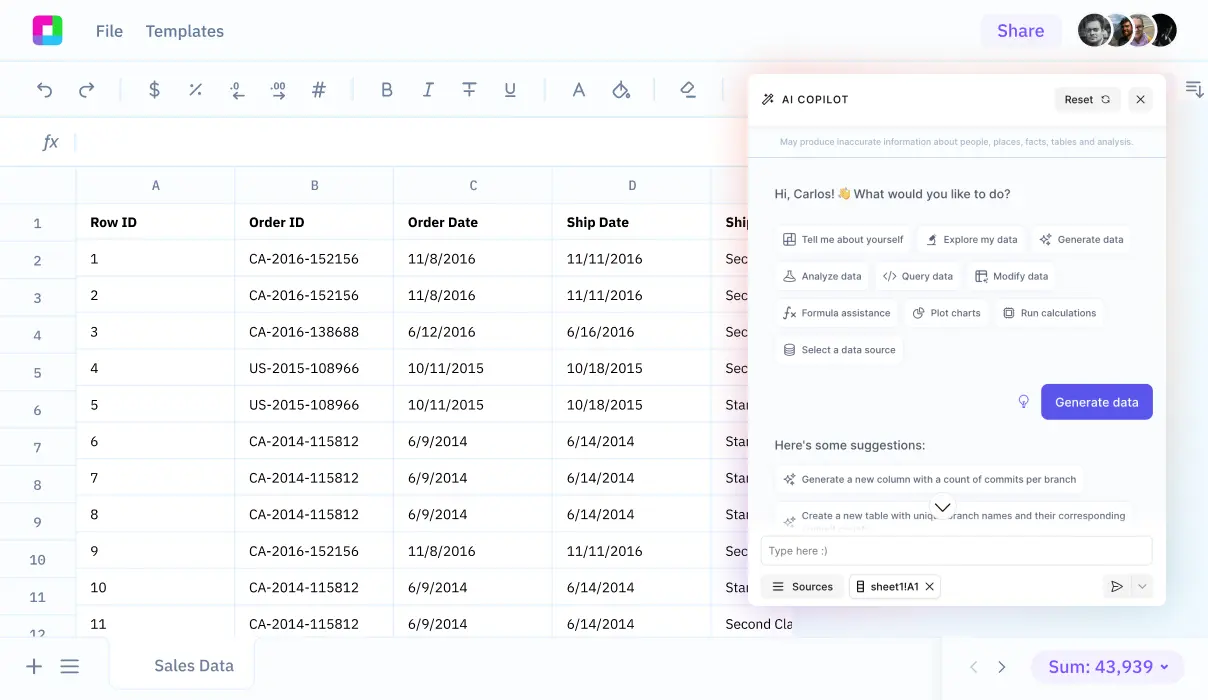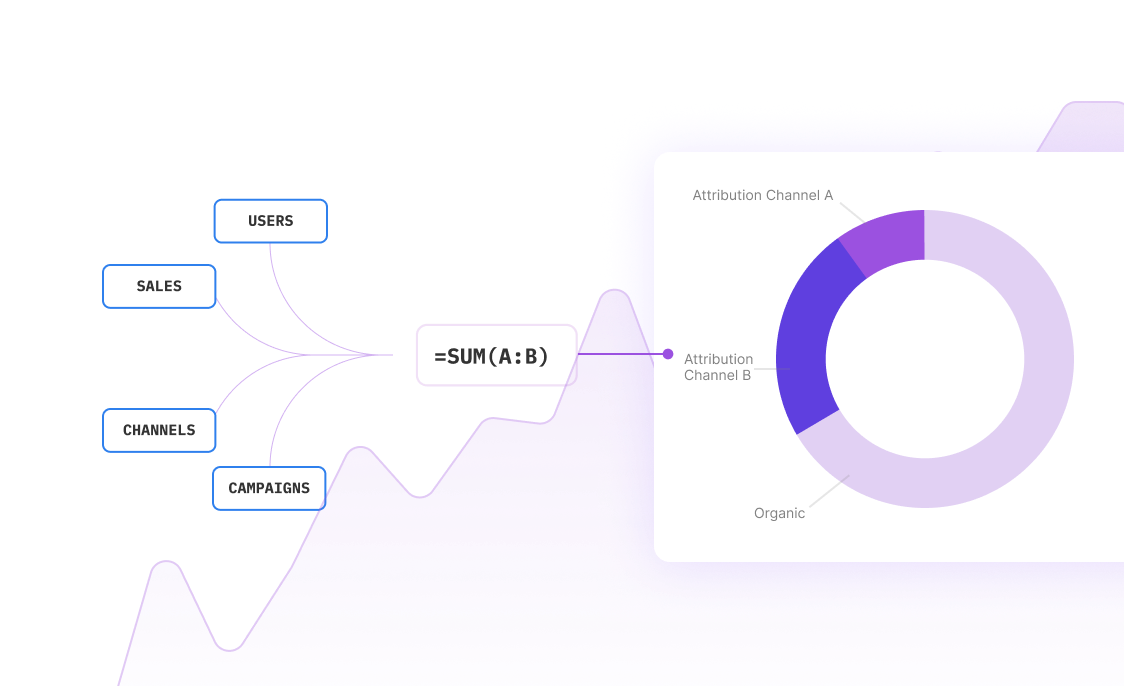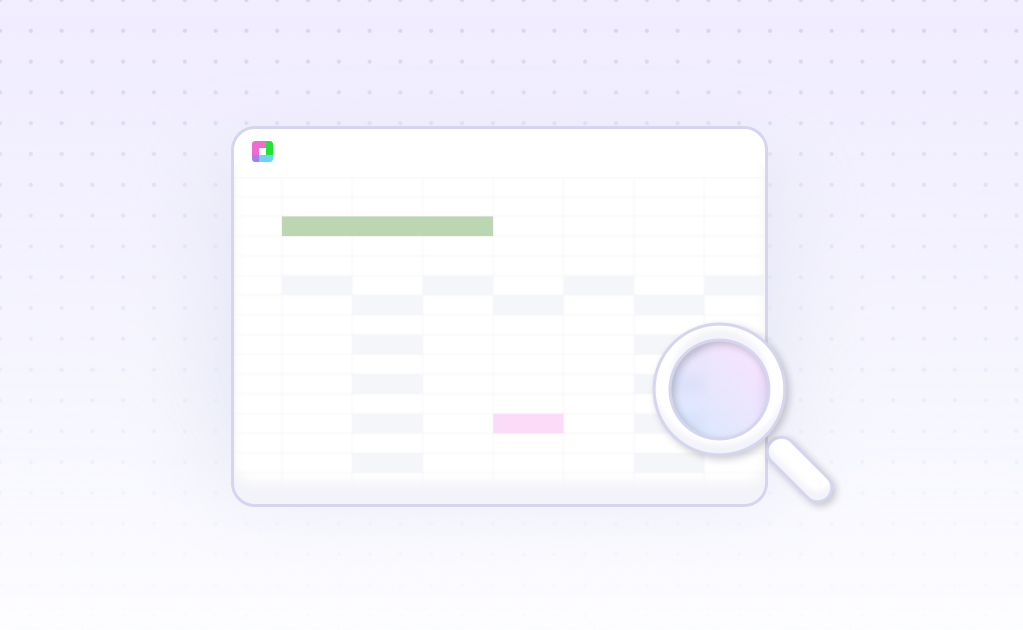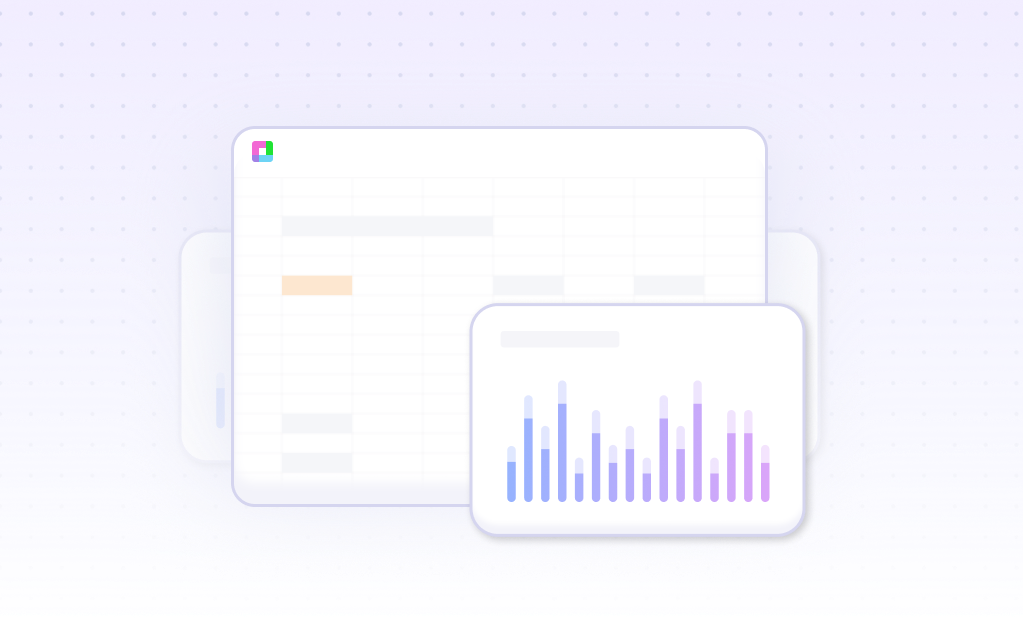
Introduction
Financial cost analysis helps businesses determine if projects are worth pursuing. Traditional Excel templates like ProjectManager's cost-benefit analysis tool allow users to analyze multiple paths and collect both quantitative and qualitative benefits. However, modern AI solutions offer enhanced capabilities for data analysis, insights, and automation.
Sourcetable combines Excel-like functionality with powerful AI features, enabling faster and more accurate financial analysis. Like Excel, it uses familiar A1 notation and cell-based referencing, but adds natural language processing, automated chart creation, and integration with over 100 business applications. The platform syncs with databases including Postgres, MySQL, and MongoDB, while its AI assists with formulae, data cleaning, and report automation.
This guide explores how Sourcetable's AI-powered platform streamlines financial cost analysis, which you can experience at sourcetable.com/signup.
Why Sourcetable Is Superior for Financial Cost Analysis
Sourcetable combines sophisticated cost-benefit analysis capabilities with AI-powered automation, surpassing traditional Excel workflows. While both platforms support key financial metrics like NPV and benefit-cost ratios, Sourcetable's natural language processing streamlines complex calculations and research requirements.
Advanced Analytical Capabilities
Excel AI tools offer data cleaning and predictive analytics through various add-ins, but Sourcetable integrates these features natively. Its AI-driven insights automatically identify trends and generate recommendations, eliminating the need for multiple third-party extensions like DataRobot or XLStat Free.
Collaborative Cost Analysis
Both platforms enable multi-user collaboration, but Sourcetable's audit trail feature ensures transparent decision-making across teams. This accountability is crucial for comprehensive cost-benefit analyses that require extensive research and standardized quantification methods.
Streamlined Automation
While Excel relies on tools like Automate.ai for workflow automation, Sourcetable's natural language processing directly converts analysis requirements into data visualizations and reports. This direct approach reduces the complexity of financial modeling and improves accuracy in cost-benefit calculations.
Benefits of Financial Cost Analysis with AI-Powered Spreadsheets
Cost-benefit analysis provides organizations with a structured method for evaluating projects, simplifying decision-making, and strategic planning. This systematic approach helps optimize resource allocation across initiatives.
Enhanced Analysis with AI Spreadsheet Technology
AI-powered spreadsheet tools uncover hidden patterns and trends within financial data, enabling deeper insights that lead to better decision-making. By automating repetitive tasks like data entry, cleaning, and formatting, AI technology allows analysts to focus on high-value strategic work.
Financial Cost Analysis Examples with AI-Powered Spreadsheets
Modern AI-powered spreadsheet tools enable comprehensive financial analysis across multiple business areas. These tools process large datasets to provide actionable insights for finance teams, procurement, sales, and inventory management.
Planning and Forecasting
AI spreadsheet features automatically analyze historical data to identify patterns and forecast future costs. The system processes vast datasets to detect trends and anomalies, enabling more accurate financial planning and budgeting decisions.
Data Management and Analysis
AI-powered spreadsheets automate data management tasks while providing a 360-degree view of organizational financial performance. These tools quickly process large datasets to deliver accurate, actionable insights for informed decision-making.
M&A Due Diligence
Advanced AI features support mergers and acquisitions by analyzing financial trends and patterns across multiple data sources. The system identifies potential issues and opportunities, streamlining the due diligence process.
Financial Cost Analysis Use Cases for Sourcetable
Project Feasibility Assessment |
Use Sourcetable's computational abilities to assess project feasibility through plantwide overhead rate calculations. Evaluate costs, revenues, and opportunity costs to determine if a project is worth pursuing. |
Sales Forecasting |
Leverage AI-powered prediction tools to forecast future sales figures based on historical data and market trends. Use these predictions for strategic planning and resource allocation. |
Pricing Strategy Optimization |
Calculate plantwide overhead rates |
Customer Retention Analysis |
Analyze historical customer data to predict potential customer churn. Use these insights to adjust financial strategies and maintain revenue stability. |
Frequently Asked Questions
What is financial cost analysis and why is it valuable?
Cost-benefit analysis is a data-driven strategic planning tool that provides deeper insights into both financial and non-financial outcomes. It helps with resource allocation while avoiding the consideration of too many options simultaneously.
How does Sourcetable improve financial cost analysis compared to traditional methods?
Sourcetable is an AI-driven spreadsheet tool that automates complex tasks, offers formula generation, data analysis, and chart creation. It integrates with over 100+ platforms and databases, making it particularly effective for financial modeling and forecasting.
What specific AI capabilities does Sourcetable offer for cost analysis?
Sourcetable leverages AI to automate data analysis, process large datasets quickly, and identify patterns and trends. It includes predictive analytics for forecasting future costs based on historical data and anomaly detection to alert users to unusual cost patterns.
Conclusion
Cost-benefit analysis in Excel follows a structured six-step process: identify the project, list costs, determine benefits, calculate net benefit, analyze results, and make decisions. While Excel remains valuable for financial modeling, modern alternatives like Sourcetable offer AI-powered solutions that simplify this process.
Sourcetable combines traditional spreadsheet functionality with an AI chatbot that understands natural language commands. It accelerates formula creation, charting, and data cleaning while integrating with over 100 data sources. For those without Excel expertise, Sourcetable provides an accessible path to professional financial analysis through its AI assistant and Python/SQL capabilities.
Ready to streamline your financial cost analysis? Try Sourcetable's AI-powered spreadsheet platform at sourcetable.com/signup.
Recommended Analysis Guides
Connect your most-used data sources and tools to Sourcetable for seamless analysis.
Frequently Asked Questions
If you question is not covered here, you can contact our team.
Contact Us





